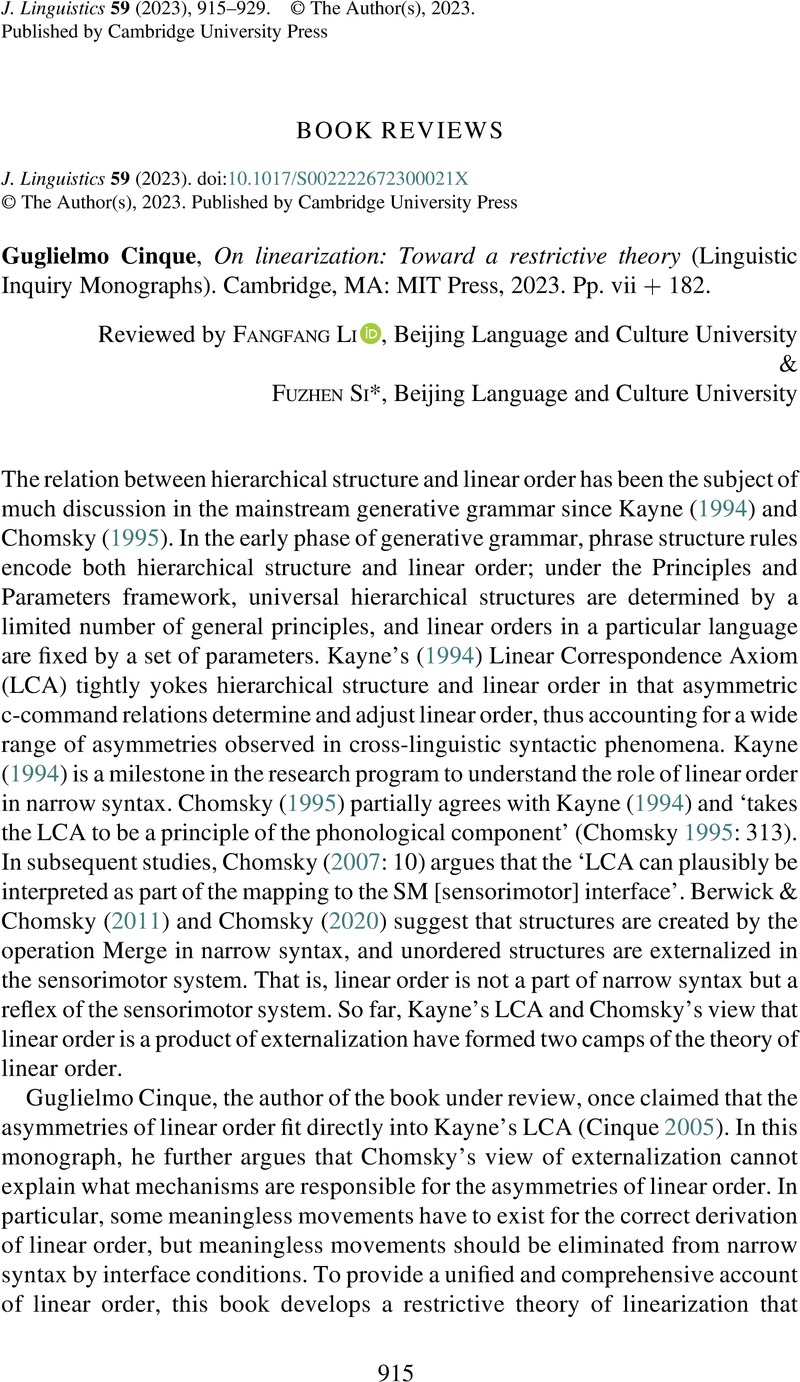No CrossRef data available.
Article contents
Guglielmo Cinque, On linearization: Toward a restrictive theory (Linguistic Inquiry Monographs). Cambridge, MA: MIT Press, 2023. Pp. vii + 182.
Review products
Guglielmo Cinque, On linearization: Toward a restrictive theory (Linguistic Inquiry Monographs). Cambridge, MA: MIT Press, 2023. Pp. vii + 182.
Published online by Cambridge University Press: 14 July 2023
Abstract
An abstract is not available for this content so a preview has been provided. Please use the Get access link above for information on how to access this content.

- Type
- Book Review
- Information
- Copyright
- © The Author(s), 2023. Published by Cambridge University Press
References
Berwick, Robert C. & Chomsky, Noam. 2011. The biolinguistic program: The current state of its evolution and development. In Di Sciullo, Anna Maria & Boeckx, Cedric (eds.), The biolinguistic enterprise: New perspectives on the evolution and nature of the human language faculty, 19–41. Cambridge, MA: MIT Press.Google Scholar
Chomsky, Noam. 2007. Approaching UG from below. In Sauerland, Uli & Gärtner, Hans M. (eds.), Interfaces + recursion = language? Chomsky’s minimalism and the view from syntax-semantics, 1–29. Berlin: Mouton de Gruyter.Google Scholar
Chomsky, Noam. 2020. The UCLA lectures, April 29–May 2, 2019. https://ling.auf.net/lingbuzz/005485 (accessed June 2021). With an introduction by Robert Freidin.Google Scholar
Cinque, Guglielmo. 2005. Deriving Greenberg’s Universal 20 and its exceptions. Linguistic Inquiry 36.3, 315–332.CrossRefGoogle Scholar
Cinque, Guglielmo. 2021. Cartography and linear order. Presented at the 4th International Workshop on Syntactic Cartography, Beijing Language and Culture University.Google Scholar
Cinque, Guglielmo & Luigi, Rizzi. 2010. The cartography of syntactic structures. In Heine, Bernd & Narrog, Heiko (eds.), The Oxford handbook of linguistic analysis, 51–65. Oxford: Oxford University Press.Google Scholar



